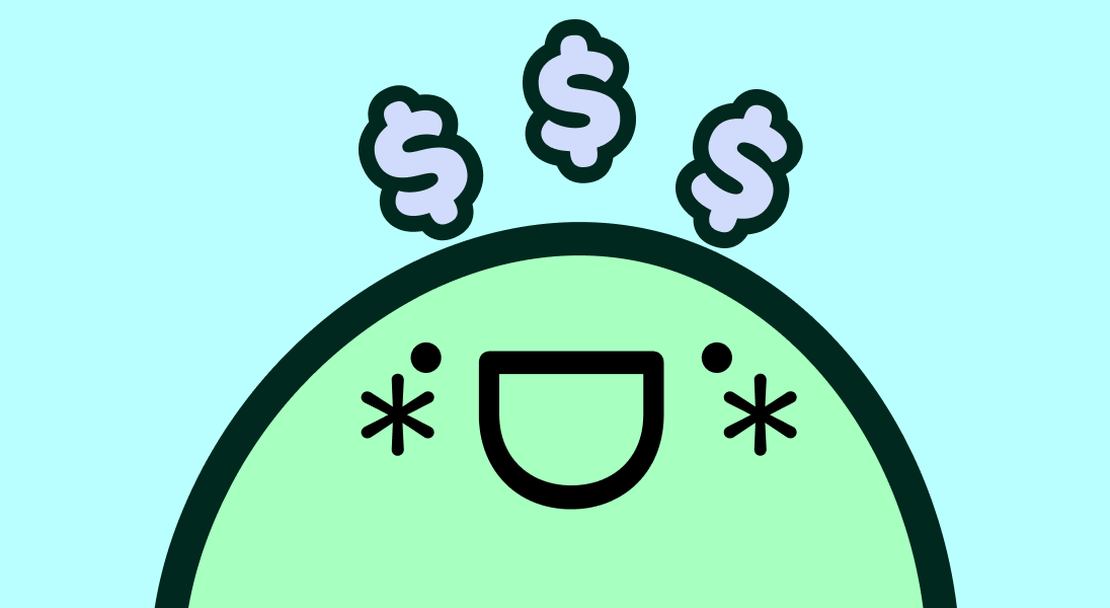
How to Stop Emotional Spending: 8 Effective Tips
-
Beatriz Macuco
- November 23, 2024
Table of Contents
How often have you clicked “Add to Cart” when life felt overwhelming? If you’ve ever turned to shopping as a way to cope, you’re not alone. According to a study by LendingTree, 69% of Americans admit to emotional spending —making purchases triggered by stress, sadness, or even boredom. Maybe it was after a tough day at work when you craved a little pick-me-up. Or perhaps it was late at night, scrolling through your favorite store, convincing yourself that a new gadget, outfit, or home decor item could fill a gap you couldn’t quite define. For a fleeting moment, it felt like the answer—happiness neatly packaged and on its way to your door.
But once the high fades and that purchase sits unopened or forgotten, you’re left wondering: Why do I keep buying things I don’t need?
This post isn’t about guilt or shame. It’s about understanding the psychology of emotional spending—and learning how to take control. Here are eight actionable tips to help you break the cycle and make choices that truly align with what you value.
Why do I emotionally spend money?
Emotional spending occurs when emotions, rather than actual needs, drive purchasing decisions. This can mean shopping to relieve stress, cope with sadness, or celebrate an accomplishment.
Dopamine, a neurotransmitter associated with motivation and reward, plays a key role in this behavior. The anticipation of buying something new triggers a release of dopamine, creating a temporary sense of excitement or pleasure. However, the effect is often short-lived, leaving many people feeling regretful or dissatisfied afterward.
If you’re curious to dive deeper into how dopamine influences shopping decisions and explore solutions to emotional spending, check out our guide on Buyer’s Remorse and Retail Therapy Solutions .
How to stop being an emotional spender?
Emotional spending isn’t just an occasional splurge—it’s a complex habit often fueled by stress, boredom, or the desire for a quick pick-me-up. With products always within arm’s reach and social media constantly pitching new “must-haves,” it can feel nearly impossible to resist those urge-driven purchases. The good news? Awareness and simple strategies can make all the difference. By understanding why you emotionally spend and embracing healthier ways to cope with your feelings, you can reclaim control, make more intentional decisions, and ultimately find greater satisfaction in how you choose to spend your money.
1. Use a Wishlist to Stop Emotional Spending
That “Buy Now” button can feel irresistible in the moment, but stepping back—even briefly—can make a world of difference. Waiting at least 24 hours before making a purchase reduces impulse buying. Why? It gives you time to separate passing emotions, like stress or boredom, from your actual needs.
A wishlist is a simple but powerful tool to pause and reflect. Add the item you’re eyeing to your list and let it sit. This pause helps you ask yourself if it’s something you genuinely want or just a fleeting desire sparked by emotion or savvy marketing.
An added benefit? Seeing all your wishlist items in one place can help you prioritize. You might realize some were mere whims or that one item stands out as more meaningful than the rest. These small steps can help you break the cycle of emotional purchases.
2. Identify Emotional Spending Triggers
Have you ever stopped to consider why you shop? Emotional spending often stems from deeper feelings we don’t immediately recognize. Understanding these triggers is key to changing your habits.
When I started tracking my emotions before making purchases, I uncovered something surprising: boredom was one of my biggest triggers. I’d always known I was an anxious shopper, but it wasn’t until I began keeping track of my feelings that I realized I also shopped out of boredom.
Recognizing your emotional spending triggers is a powerful step. Instead of reaching for your phone to shop, try addressing the underlying emotion directly. For example, if you’re stressed, go for a walk or meditate. If you’re lonely, call a friend or join a community.
3. Weigh the Pros and Cons of Non Essential Purchases
Before making a purchase, pause and list the pros and cons. This simple exercise can offer surprising clarity and help you avoid regrets.
Ask yourself:
- How much do I actually like it?
- What value will this add to my life?
- Could I borrow, thrift or mend something I already own?
- Is this the best use of this money?
- Was this a planned purchase?
Before using this tactic, I would focus only on the pros of a purchase, convincing myself that I truly needed it. However, when I began asking questions like “Is this the best use of my money?” the balance often shifted toward the cons. Emotional spending feeds on the excitement of the moment, but this approach helps you pause and consider the bigger picture.
Weighing the pros and cons has saved me countless impulse buys, giving me a sense of control over my spending. Try it—you might be surprised how often the cons outweigh the fleeting positives.
4. Understand Emotional Spending Influences
Sometimes, the urge to spend isn’t entirely your own. Social media, influencers, and societal pressures heavily shape emotional spending habits. Let’s unpack two major influences:
a. Social Media and Influencer Culture
Social media turns emotional spending into second nature. Platforms like Instagram and TikTok bombard us with picture-perfect lifestyles, where influencers seamlessly promote products as must-haves. Their recommendations feel genuine, but they’re often carefully crafted ads.
In fact, 74% of consumers admit to buying products recommended by influencers . Their emotional storytelling creates a sense of trust, making it easier to hit “buy” without a second thought.
b. The Pressure to Keep Up
“Keeping up with the Joneses” has simply gone digital. From friends’ vacation photos to colleagues’ latest gadgets, the pressure to match or surpass others’ lifestyles is very real. Research shows that 40% of millennials have gone into debt trying to keep up .
Recognizing these external pressures can help you pause and reflect: Are my purchases aligned with my goals, or am I simply being influenced by others? If you’d like to dive deeper into this topic, check out this blog post on the cycle of work and spend .
5. Recognize Emotional Spending Justifications
Take a moment to think about how you justify purchases. Maybe you’ve caught yourself thinking:
- I deserve this after a long day.
- It’s on sale—I can’t pass that up!
- This will make me feel better.
- I need be admired by others.
- I want to please someone else.
These justifications are often repeated patterns, your brain’s way of rationalizing emotional spending. Recognizing them is an important step to breaking the cycle.
For me, “I deserve this” used to be my go-to phrase, especially after a tough day at work. Now, when that thought pops up, I see it as a red flag for emotional spending. This small shift has significantly changed how I approach my spending habits.
6. Be Aware of Sales Tactics That Encourage Emotional Purchases
Marketers are masters of urgency, using tactics like “limited stock!” or “last chance!” to create fear of missing out. Bundling items together or hyping “exclusive” deals can make even unnecessary purchases feel essential.
Here’s the truth: Items are rarely as scarce as they seem. Limited editions come back in new colors, or updated versions appear—sometimes at better prices. Staying aware of these strategies helps you take control, rather than letting marketing drive your decisions.
7. Ask: Will This Purchase Bring Lasting Joy?
Imagine yourself with this item a year from now—will it still add value to your life, or will it end up as clutter? Emotional spending often delivers only fleeting satisfaction, leaving you with things that don’t truly align with your needs or values.
I’ve lost count of how many times I’ve bought things that didn’t realistically fit into my life. Instead, they represented the person I aspired to be. But since I never magically transformed into that idealized version of myself, those items would just sit around, unused.
This question isn’t about deprivation—it’s about understanding what truly aligns with your life and values. By reflecting on whether something will bring lasting joy or simply serve as a fleeting symbol of who you think you should be, you can make choices that feel authentic and meaningful.
8. Strengthen Emotional Connections, Not Shopping Habits
In a world grappling with a loneliness epidemic, many people turn to shopping to fill emotional voids. Yet, a new purchase rarely addresses those deeper needs.
True fulfillment lies in human connection. Spending quality time with loved ones, building relationships, or joining a community can fill emotional gaps in ways shopping never will. In fact, one of Harvard’s longest-running studies shows that embracing community not only makes us happier but also helps us live longer .
So, the next time you feel the urge to shop, try reaching out to someone instead—it might just be what you truly need.
Breaking the Emotional Spending Cycle
Emotional spending doesn’t have to control you. By understanding your triggers, staying mindful of external pressures, and focusing on meaningful connections, you can start making choices that align with what you truly value. With these tips, you’re one step closer to financial peace—and a life filled with more of what really matters. Ready to put these insights into action? Try Willow , the app designed to help you understand the emotions that drive your spending and guide you toward more intentional, value-based decisions.


